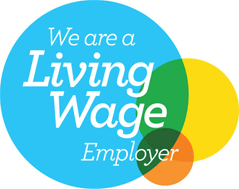Changes to the Coronavirus Job Retention Scheme: Planning Ahead for your Business
From 1 July 2020, employers can bring their furloughed employees back to work. This can cover any amount of working hours and any shift pattern, while still being able to claim the Coronavirus Job Retention Scheme grant. For example, full-time employees returning to work 1 day a week, will be paid in full by their employer, with the employer continuing to claim 80% of the employee’s wage costs through the furlough scheme, for the remaining 4 days.
Previously, furloughed employees could not carry out any work for their employer, although perversely they could go and work for another employer.
The furlough scheme will close to new entrants so employers must have furloughed their employee for at least 3 weeks prior to 30 June. This is why a cut-off date of 10 June has been given. Unhelpfully, further guidance is not going to be published until 12 June. We still do not know whether employees who have been furloughed in 3 week blocks, on a rotational basis with other employees, prior to the 10 June, will also be automatically included.
This is welcome news for employers, some of which have been running their company on their own. The “sting in the tail” is that from August, employers must also contribute towards the cost of the extended furlough scheme. Currently the government pay 80% of salary, up to a cap of £2,500 per month plus employer National Insurance (NI) and minimum employer pension contributions. From August, the government will still pay 80% of the employee’s salary but the employer will have to pay NI and pension contributions.
By 1 September, the government will only contribute 70% with the employer having to pay the remaining 10%. In the final month of October, the government contribution will drop to 60% and the employer must contribute 20%. If employers choose to top up to make up full salary, a further 20% needs to be added to the employer’s contribution.
As the furlough scheme ends on 31 October, if redundancies are on the cards, it would be wise for employers to start a fair redundancy process now. This would ensure the grant covers the employee’s notice period, which is determined by their length of service and the terms in their contract.
To avoid a breach of contract claim, we are advising employers that notice and approved holiday pay should be paid at full rate. This is unless the Furlough Agreement you have provided shows agreement by the employee to only be paid at the furloughed rate for these types of contractual payments.
The Self Employed Income Support Scheme has also been extended from its previous closing date of 31 May, for a second round in August. Grants will drop to 70%, or a maximum of £6750 for 3 months.
There is no doubt that there will be mass redundancies once The Coronavirus Job Retention Scheme ends. The Government is going to be announcing large job creation and training schemes. These will be necessary to revive our economy and to avoid mass unemployment. It is to be hoped that they will also roll out further financial help so businesses that need to diversify to survive will be given access to further grants, training and support. Hard times are ahead as we hit a global economic recession. Many businesses will have no option but to close, but as always there will be opportunities, and certain sectors such as telecommunications and IT will grow. We all need to plan for this brave new world.
If your business requires expert advice on furlough leave and the Coronavirus Job Retention Scheme, contact our Employment Law Team on 01273 609911, or email info@ms-solicitors.co.uk.



